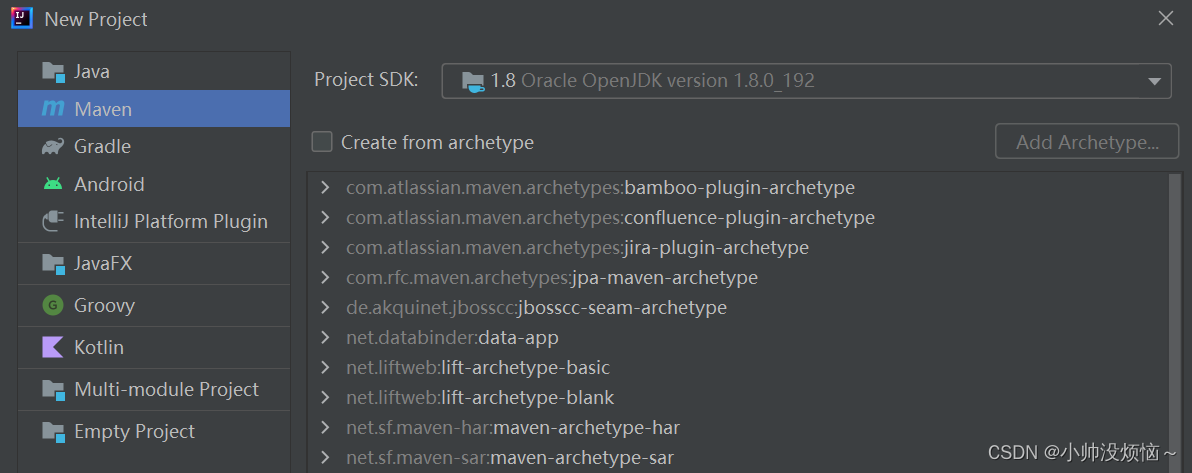@PostConstruct很多人都不会陌生,很多人都会用PostConstruct来进行一些初始化相关的操作,被PostConstruct标注的方法会在对应的Bean完成依赖注入之后执行,所以并不是Spring容器刷新完成后才执行,那么PostConstruct注解到底怎么生效的?接着往下说。
先看个实际的简单的例子,并试着回答一下从Bean实例化开始分别都经历了哪些过程。
@Slf4j
@Component
public class TestPost {
@Autowired
private TestDemo testDemo;
@PostConstruct
public void testA(String args){
try {
Thread.sleep(3000);
}catch (Exception ignore){
}
testDemo = new TestDemo();
}
}
- Spring容器首先要将TestDemo给注入进来,如果当前容器内没有TestDemo,那就先去把TestDemo给注册到容器里
- 然后相关的依赖都注入完成了,开始执行被PostConstruct标注着的testA。
- 先休眠个3秒,然后新创建一个TestDemo的实例并指向成员变量testDemo。
Lifecycle method annotation requires a no-arg method: public void com.demo.demo.service.TestPost.testA(java.lang.String)
你扣了扣脑门,这是为什么啊?你管我有没有入参呢?你Spring又是啥时候偷偷检查的?这个放在后面来讲,我们再进入一个代码并试着分析一下输出顺序。再扩展一下,假如父类也有初始化方法,那么先子类还是先父类的呢?
@Slf4j
@Component
public class TestPost {
@PostConstruct
public void testC(){
log.info("method C run! ");
}
@PostConstruct
public void testA(){
log.info("method A run!");
}
@PostConstruct
public void testB(){
log.info("method B run!");
}
}
@Documented
@Retention (RUNTIME)
@Target(METHOD)
public @interface PostConstruct {
}
你试着看了看哪里用到了这个注解,好家伙,原来就是CommonAnnotationBeanPostProcessor你这个后置处理器用到了啊。
public class CommonAnnotationBeanPostProcessor extends InitDestroyAnnotationBeanPostProcessor
implements InstantiationAwareBeanPostProcessor, BeanFactoryAware, Serializable {
public CommonAnnotationBeanPostProcessor() {
setOrder(Ordered.LOWEST_PRECEDENCE - 3);
//真是熟悉的身影
setInitAnnotationType(PostConstruct.class);
//猜都猜的到这个小伙子会在这里
setDestroyAnnotationType(PreDestroy.class);
ignoreResourceType("javax.xml.ws.WebServiceContext");
}
}
setInitAnnotationType是父类InitDestroyAnnotationBeanPostProcessor的方法之一,主要是就是指定配置bean之后的初始化注解类型。
public class InitDestroyAnnotationBeanPostProcessor {
//这里就给你设定一下,传入的就是PostConstruct
public void setInitAnnotationType(Class<? extends Annotation> initAnnotationType) {
this.initAnnotationType = initAnnotationType;
}
//这里就是用到的地方,clazz是我们对应的bean
private LifecycleMetadata buildLifecycleMetadata(final Class<?> clazz) {
if (!AnnotationUtils.isCandidateClass(clazz, Arrays.asList(this.initAnnotationType, this.destroyAnnotationType))) {
return this.emptyLifecycleMetadata;
}
//初始化方法集合
List<LifecycleElement> initMethods = new ArrayList<>();
//销毁方法集合
List<LifecycleElement> destroyMethods = new ArrayList<>();
//targetClass需要处理的Class
Class<?> targetClass = clazz;
do {
final List<LifecycleElement> currInitMethods = new ArrayList<>();
final List<LifecycleElement> currDestroyMethods = new ArrayList<>();
ReflectionUtils.doWithLocalMethods(targetClass, method -> {
//看看是不是被initAnnotationType也就是我们的PostConstruct注解标注了
if (this.initAnnotationType != null && method.isAnnotationPresent(this.initAnnotationType)) {
//生成LifecycleElement并加到初始化方法列表里,这里就是不然你加方法入参的地方,后面说
LifecycleElement element = new LifecycleElement(method);
currInitMethods.add(element);
if (logger.isTraceEnabled()) {
logger.trace("Found init method on class [" + clazz.getName() + "]: " + method);
}
}
if (this.destroyAnnotationType != null && method.isAnnotationPresent(this.destroyAnnotationType)) {
currDestroyMethods.add(new LifecycleElement(method));
if (logger.isTraceEnabled()) {
logger.trace("Found destroy method on class [" + clazz.getName() + "]: " + method);
}
}
});
//由于是从此类往父类开找,这个我们一眼就看出来父类的先执行了
initMethods.addAll(0, currInitMethods);
//不言而喻
destroyMethods.addAll(currDestroyMethods);
//指向父类
targetClass = targetClass.getSuperclass();
}
//也就是往父类挨个找,直到父类为空或者就是Object类
while (targetClass != null && targetClass != Object.class);
return (initMethods.isEmpty() && destroyMethods.isEmpty() ? this.emptyLifecycleMetadata :
new LifecycleMetadata(clazz, initMethods, destroyMethods));
}
//就是它做的事儿
public LifecycleElement(Method method) {
//你这方法入参要是不为0,直接就是一手报错,没问题吧
if (method.getParameterCount() != 0) {
throw new IllegalStateException("Lifecycle method annotation requires a no-arg method: " + method);
}
this.method = method;
this.identifier = (Modifier.isPrivate(method.getModifiers()) ?
ClassUtils.getQualifiedMethodName(method) : method.getName());
}
}
bean的后置处理器什么时候被调用,自己怎么自定义bean后置处理器这个留在以后再说。
回到开始的问题,一个类中多个PostConstruct执行顺序又怎么说?首先就是我们自己如果跑一下代码应该可以很快得知内容。
第一次的运行结果: A -> B -> C,真相那都就是name的排序结果?
com.demo.demo.service.TestPost : method A run!
com.demo.demo.service.TestPost : method B run!
com.demo.demo.service.TestPost : method C run!
第二次的运行结果:C -> B -> A,这结果真是很量子力学,因为感受到我们的观测,所以第二次程序就按照相反的顺序执行。
com.demo.demo.service.TestPost : method C run!
com.demo.demo.service.TestPost : method B run!
com.demo.demo.service.TestPost : method A run!
第三次的运行结果:B -> C -> A,打扰了,搁这儿玩全排序呢?
com.demo.demo.service.TestPost : method B run!
com.demo.demo.service.TestPost : method C run!
com.demo.demo.service.TestPost : method A run!
三次都是亲手跑的,不是我自己脑补写上去的,实际上这玩意就是随机的,也就是顺序不固定。那问题来了,为什么不固定?Spring写了个随机函数?允许我加粗个标题。
多个@PostConstruct标注方法顺序为什么是随机的?
回到我们上面的InitDestroyAnnotationBeanPostProcessor后置处理器的buildLifecycleMetadata方法,我再贴一次
public class InitDestroyAnnotationBeanPostProcessor {
private LifecycleMetadata buildLifecycleMetadata(final Class<?> clazz) {
if (!AnnotationUtils.isCandidateClass(clazz, Arrays.asList(this.initAnnotationType, this.destroyAnnotationType))) {
return this.emptyLifecycleMetadata;
}
List<LifecycleElement> initMethods = new ArrayList<>();
List<LifecycleElement> destroyMethods = new ArrayList<>();
Class<?> targetClass = clazz;
do {
final List<LifecycleElement> currInitMethods = new ArrayList<>();
final List<LifecycleElement> currDestroyMethods = new ArrayList<>();
//其实重要的就是这个,调用了ReflectionUtils的doWithLocalMethods
//doWithLocalMethods的两个入参:一个目标类一个函数式接口MethodCallback并在这层写了doWith实现
ReflectionUtils.doWithLocalMethods(targetClass, method -> {
if (this.initAnnotationType != null && method.isAnnotationPresent(this.initAnnotationType)) {
LifecycleElement element = new LifecycleElement(method);
//这个currInitMethods是个list,所以添加顺序就是固定的,那么底层的遍历顺序才是决定方法顺序的地方
//所以需要到ReflectionUtils.doWithLocalMethods去查看原因
currInitMethods.add(element);
if (logger.isTraceEnabled()) {
logger.trace("Found init method on class [" + clazz.getName() + "]: " + method);
}
}
if (this.destroyAnnotationType != null && method.isAnnotationPresent(this.destroyAnnotationType)) {
currDestroyMethods.add(new LifecycleElement(method));
if (logger.isTraceEnabled()) {
logger.trace("Found destroy method on class [" + clazz.getName() + "]: " + method);
}
}
});
initMethods.addAll(0, currInitMethods);
destroyMethods.addAll(currDestroyMethods);
targetClass = targetClass.getSuperclass();
}
while (targetClass != null && targetClass != Object.class);
return (initMethods.isEmpty() && destroyMethods.isEmpty() ? this.emptyLifecycleMetadata :
new LifecycleMetadata(clazz, initMethods, destroyMethods));
}
}
嗖的一下啊,我们就来到了ReflectionUtils.doWithLocalMethods这里
public abstract class ReflectionUtils {
public static void doWithLocalMethods(Class<?> clazz, MethodCallback mc) {
//下面是对methods的遍历,所以methods数组的顺序就决定了后面执行的顺序
Method[] methods = getDeclaredMethods(clazz, false);
for (Method method : methods) {
try {
mc.doWith(method);
}
catch (IllegalAccessException ex) {
throw new IllegalStateException("Not allowed to access method '" + method.getName() + "': " + ex);
}
}
}
private static Method[] getDeclaredMethods(Class<?> clazz, boolean defensive) {
Assert.notNull(clazz, "Class must not be null");
//这里有个declaredMethodsCache,正常的缓存设计,那我们肯定看没有缓存从源头拿的时候了
Method[] result = declaredMethodsCache.get(clazz);
if (result == null) {
try {
//这里就是核心了,这里就跳到Class类去了,想来也是肯定的,毕竟要获取类的信息
Method[] declaredMethods = clazz.getDeclaredMethods();
//这个是找接口层默认实现的方法,甭管它
List<Method> defaultMethods = findConcreteMethodsOnInterfaces(clazz);
if (defaultMethods != null) {
result = new Method[declaredMethods.length + defaultMethods.size()];
System.arraycopy(declaredMethods, 0, result, 0, declaredMethods.length);
int index = declaredMethods.length;
for (Method defaultMethod : defaultMethods) {
result[index] = defaultMethod;
index++;
}
}
else {
result = declaredMethods;
}
declaredMethodsCache.put(clazz, (result.length == 0 ? EMPTY_METHOD_ARRAY : result));
}
catch (Throwable ex) {
throw new IllegalStateException("Failed to introspect Class [" + clazz.getName() +
"] from ClassLoader [" + clazz.getClassLoader() + "]", ex);
}
}
return (result.length == 0 || !defensive) ? result : result.clone();
}
}
public final class Class<T> implements java.io.Serializable, GenericDeclaration, Type, AnnotatedElement {
@CallerSensitive
public Method[] getDeclaredMethods() throws SecurityException {
//检查行为
checkMemberAccess(Member.DECLARED, Reflection.getCallerClass(), true);
//好了,就是privateGetDeclaredMethods方法来的,快要接近终点了,马上就要真相大白了
return copyMethods(privateGetDeclaredMethods(false));
}
private Method[] privateGetDeclaredMethods(boolean publicOnly) {
//前面的我得懒得管
checkInitted();
Method[] res;
//老规矩我不看你的缓存的是啥
ReflectionData<T> rd = reflectionData();
if (rd != null) {
res = publicOnly ? rd.declaredPublicMethods : rd.declaredMethods;
if (res != null) return res;
}
// 拿不到之后的操作才是源头操作,很明显不出意外啊getDeclaredMethods0就是最终的获取方法,顺序问题重要接近尾声了,点进去就是结果了
res = Reflection.filterMethods(this, getDeclaredMethods0(publicOnly));
if (rd != null) {
if (publicOnly) {
rd.declaredPublicMethods = res;
} else {
rd.declaredMethods = res;
}
}
return res;
}
//居然是个native方法?裂开了啊
private native Method[] getDeclaredMethods0(boolean publicOnly);
}
想了想不能白分析啊,这就打开JDK源码,检索一下我们的getDeclaredMethods0,然后我们在Class.c文件找到了它
static JNINativeMethod methods[] = {
{"getDeclaredMethods0","(Z)[" MHD, (void *)&JVM_GetClassDeclaredMethods},
}
接下来就是找JVM_GetClassDeclaredMethods了,在jvm.h上对应着有
JNIEXPORT jobjectArray JNICALL
JVM_GetClassDeclaredMethods(JNIEnv *env, jclass ofClass, jboolean publicOnly);
在jvm.cpp上对应着有,看来又要去找get_class_declared_methods_helper了
JVM_ENTRY(jobjectArray, JVM_GetClassDeclaredMethods(JNIEnv *env, jclass ofClass, jboolean publicOnly))
{
return get_class_declared_methods_helper(env, ofClass, publicOnly,
/*want_constructor*/ false,
vmClasses::reflect_Method_klass(), THREAD);
}
JVM_END
在get_class_declared_methods_helper,贴一下代码
static jobjectArray get_class_declared_methods_helper(
JNIEnv *env,
jclass ofClass, jboolean publicOnly,
bool want_constructor,
Klass* klass, TRAPS) {
JvmtiVMObjectAllocEventCollector oam;
oop ofMirror = JNIHandles::resolve_non_null(ofClass);
// Exclude primitive types and array types
if (java_lang_Class::is_primitive(ofMirror)
|| java_lang_Class::as_Klass(ofMirror)->is_array_klass()) {
// Return empty array
oop res = oopFactory::new_objArray(klass, 0, CHECK_NULL);
return (jobjectArray) JNIHandles::make_local(THREAD, res);
}
//结合下面的k->methods()我们知道,关键点在于InstanceKlass
InstanceKlass* k = InstanceKlass::cast(java_lang_Class::as_Klass(ofMirror));
// Ensure class is linked
k->link_class(CHECK_NULL);
//一眼就看到了我们熟悉的东西,methods,也就是其实找的就是k,咱们的instanceKlass的结构变量methods,问题不大
Array<Method*>* methods = k->methods();
int methods_length = methods->length();
// Save original method_idnum in case of redefinition, which can change
// the idnum of obsolete methods. The new method will have the same idnum
// but if we refresh the methods array, the counts will be wrong.
ResourceMark rm(THREAD);
GrowableArray<int>* idnums = new GrowableArray<int>(methods_length);
int num_methods = 0;
for (int i = 0; i < methods_length; i++) {
methodHandle method(THREAD, methods->at(i));
if (select_method(method, want_constructor)) {
if (!publicOnly || method->is_public()) {
idnums->push(method->method_idnum());
++num_methods;
}
}
}
// Allocate result
objArrayOop r = oopFactory::new_objArray(klass, num_methods, CHECK_NULL);
objArrayHandle result (THREAD, r);
// Now just put the methods that we selected above, but go by their idnum
// in case of redefinition. The methods can be redefined at any safepoint,
// so above when allocating the oop array and below when creating reflect
// objects.
for (int i = 0; i < num_methods; i++) {
methodHandle method(THREAD, k->method_with_idnum(idnums->at(i)));
if (method.is_null()) {
// Method may have been deleted and seems this API can handle null
// Otherwise should probably put a method that throws NSME
result->obj_at_put(i, NULL);
} else {
oop m;
if (want_constructor) {
m = Reflection::new_constructor(method, CHECK_NULL);
} else {
m = Reflection::new_method(method, false, CHECK_NULL);
}
result->obj_at_put(i, m);
}
}
return (jobjectArray) JNIHandles::make_local(THREAD, result());
}
找到instanceKlass.hpp,让我们直接找到methods()
// 在这里
Array<Method*>* methods() const { return _methods; }
// 那必然是set干的顺序的事儿了啊
void set_methods(Array<Method*>* a) { _methods = a; }
Method* method_with_idnum(int idnum);
Method* method_with_orig_idnum(int idnum);
Method* method_with_orig_idnum(int idnum, int version);
通过set_methods我们找到了classFileParser.cpp,在类加载的时候进行了调用
void ClassFileParser::apply_parsed_class_metadata(
InstanceKlass* this_klass,
int java_fields_count) {
assert(this_klass != NULL, "invariant");
_cp->set_pool_holder(this_klass);
this_klass->set_constants(_cp);
this_klass->set_fields(_fields, java_fields_count);
//就是这里
this_klass->set_methods(_methods);
//而_methods又经历了一次sort
_method_ordering = sort_methods(_methods);
//排一排
static const intArray* sort_methods(Array<Method*>* methods) {
const int length = methods->length();
if (JvmtiExport::can_maintain_original_method_order() || Arguments::is_dumping_archive()) {
for (int index = 0; index < length; index++) {
Method* const m = methods->at(index);
assert(!m->valid_vtable_index(), "vtable index should not be set");
m->set_vtable_index(index);
}
}
//又再调用了Method的sort_methods
Method::sort_methods(methods);
intArray* method_ordering = NULL;
if (JvmtiExport::can_maintain_original_method_order() || Arguments::is_dumping_archive()) {
method_ordering = new intArray(length, length, -1);
for (int index = 0; index < length; index++) {
Method* const m = methods->at(index);
const int old_index = m->vtable_index();
assert(old_index >= 0 && old_index < length, "invalid method index");
method_ordering->at_put(index, old_index);
m->set_vtable_index(Method::invalid_vtable_index);
}
}
return method_ordering;
}
于是我们跟随脚步来到了method.cpp
void Method::sort_methods(Array<Method*>* methods, bool set_idnums, method_comparator_func func) {
int length = methods->length();
if (length > 1) {
if (func == NULL) {
//就这个传递进来的方法排序比较器,找一找
func = method_comparator;
}
{
NoSafepointVerifier nsv;
QuickSort::sort(methods->data(), length, func, /*idempotent=*/false);
}
// Reset method ordering
if (set_idnums) {
for (int i = 0; i < length; i++) {
Method* m = methods->at(i);
m->set_method_idnum(i);
m->set_orig_method_idnum(i);
}
}
}
}
static int method_comparator(Method* a, Method* b) {
//啥?为啥是按照名字排的啊?那。。。。肯定不是按照名字来了
return a->name()->fast_compare(b->name());
}
在method.cpp里我们可以看到#include “oops/constMethod.hpp”,对应的在constMethod.hpp中,原来你name是个Symbol啊
Symbol* name() const { return constants()->symbol_at(name_index()); }
而在Symbol.hpp中我们可以找到fast_compare,看到注释我们也知道了为了速度,采用的是Symbol的地址来比较的,每次启动在C_HEAP分配时这个地址先后顺序就没法保证了。
// Note: this comparison is used for vtable sorting only; it doesn't matter
// what order it defines, as long as it is a total, time-invariant order
// Since Symbol*s are in C_HEAP, their relative order in memory never changes,
// so use address comparison for speed
int Symbol::fast_compare(const Symbol* other) const {
return (((uintptr_t)this < (uintptr_t)other) ? -1
: ((uintptr_t)this == (uintptr_t) other) ? 0 : 1);
}
原文地址:https://blog.csdn.net/z327092292/article/details/127690428
本文来自互联网用户投稿,该文观点仅代表作者本人,不代表本站立场。本站仅提供信息存储空间服务,不拥有所有权,不承担相关法律责任。
如若转载,请注明出处:http://www.7code.cn/show_22270.html
如若内容造成侵权/违法违规/事实不符,请联系代码007邮箱:suwngjj01@126.com进行投诉反馈,一经查实,立即删除!





![[设计模式Java实现附plantuml源码~行为型]请求的链式处理——职责链模式](https://img-blog.csdnimg.cn/direct/699aac3ed0c446d088772a0ed4c444ed.png)
![[设计模式Java实现附plantuml源码~结构型]处理多维度变化——桥接模式](https://img-blog.csdnimg.cn/direct/8e811a73550d49e6a55c49a070a733e8.png)

